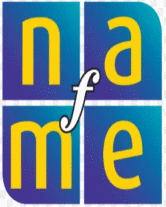Lesson based on a song written by Max Martin and Kristian Lundin.
Objectives
- Students will learn to sing Tearin' Up My Heart.
- Students will sing music written in two and three parts.
- Students will read at sight simple melodies.
- Students will describe specific music events in a given aural example.
Materials
- *NSYNC CD
- CD player
- Tearin' Up My Heart sheet music.
Procedures
- Look at the harmony.
- Hand out Tearin' Up My Heart sheet music to students. Ask students to read throughlooking for vocal harmony. (It is in the bridge--measures 43-58.)
- After locating the bridge, discuss the two-part and three-part harmony with students.
- Listen to the harmony.
- Play "Tearin' Up My Heart," inviting the students to follow with the sheet music.
- Ask your students if the vocalists followed the music. Was there vocal accompanimentthat is not notated? What else did they notice while listening and reading the music?
- Point out the two-part harmony at the beginning of the bridge (measure 43 -- top line - melody, bottom line - harmony) and the introduction of three-part harmony (measure 51 -- middle line - melody, outer lines - harmony).
- Compare the two-part harmony with the three-part harmony. What is the difference? (The three-part harmony fills out the chord.) Are the chords the same? (Yes, because the chords are the same in measures 43 and 51. The chord in measure 51 includes all four notes of the chord. The chord in measure 43 includes only three notes.)
- Extension: Discuss harmony as a function of melody and bass line. Additionally, discuss the chord structure of the bridge.
- Sing the harmony.
- Invite students to sing the lower vocal line of the bridge (m 43 - 51).
- Have students repeat this line. As they sing, play or sing quietly the other vocal line.
- Repeat until students have learned the lower line.
- Invite students to sing the upper vocal line of the bridge.
- Have students repeat this line. As they sing, play or sing quietly the other vocal line.
- Repeat until students have learned the upper line.
- Have bulk of class sing together the two-part harmony. If you have students capable of singing the third part, have them enter at m. 51.
- If time permits, switch parts and allow students to sing a different line.
- Perform song as a class or in small groups with the recording.
NOTE:
The recording is sung an octave lower than notated. Because your students may be familiar with the recording, singing in the notated octave may seem unnatural for them. Boys and altos should sing the same range as *NSYNC. Sopranos may wish to sing it in the written octave. Please caution your students not to overuse their chest voices.
Return to Teaching with *NSYNC.

| Provided in partnership with NAfME |
Learn about the harmony with *NSYNC's Tearin' Up My Heart.
Subjects
TYPE:




